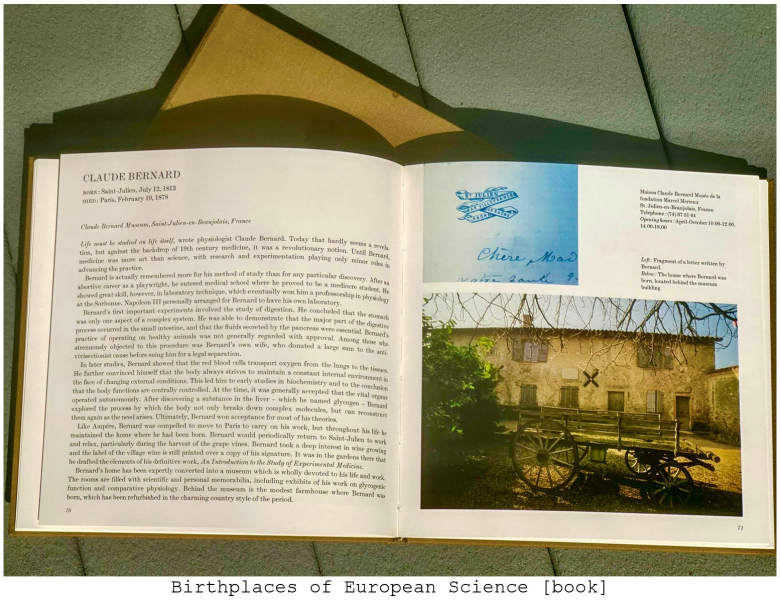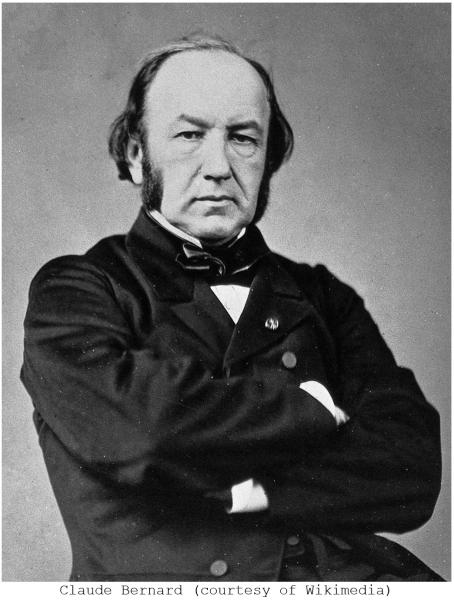Claude Bernard
Today, let’s meet a problematic scientist. The University of Houston presents this series about the machines that make our civilization run, and the people whose ingenuity created them.
______________________
I have this fancy old volume, Birthplaces of European Science. It offers all the greats whose names we honor, from Leonardo to Einstein. But here is one whom I do not know: Claude Bernard, born in 1813. He’s sandwiched between Faraday and Darwin. Who on Earth was Bernard?

He turns out to’ve been a significant, but problematic medical scientist. He wanted to be a playwright. But an important critic told him that he didn’t have the talent for it – that he should study medicine instead. Which he did. He found his way into a research-oriented professorship at the College de France.

His physiology research was broad. And it led to many discoveries. It was he who told us how the pancreas supports digestion. How the liver secretes bile. How certain nerves give rise to pulsatile action by the arteries. The list goes on, and he’s justly honored for it all.
Bernard liked to speak of the Milieu Interieur – the Interior Environment. He saw the human body as an organism with a certain independence of the outside world. Biologists now call this homeostasis – the way the body regulates itself to be somewhat independent of its environment.
But all this had a dark side. It was his callous use of vivisection. Bernard did much of his experimentation on live animals without any attempt to reduce the pain he inflicted. Just reading about these operations is enough to make my blood run cold.
And here, we must meet his wife, Fanny Martin Bernard, daughter of a wealthy physician. He was just beginning his research career when they married. Her dowry helped finance it. But she was soon horrified by his work. She heard animals screaming in pain as he explored their inner workings. So, she managed to divorce him in Catholic France, where divorce was not easily done.
Fanny and her daughters joined the Society for the Protection of Animals. She became the fiercest opponent of her ex-husband’s work. And Claude Bernard? He died at the young age of 64 from ... guess what ... from chronic nephritis, a kidney disease.
And I’m back to my strange book. It tells of Bernard’s accomplishments – provides photos of a museum set up in his honor. Only one sentence hints at the horror behind it all. It says “Bernard’s practice of operating on healthy animals was not generally regarded with approval.” Indeed, it was not!
And his play? The one whose critique sent him into medicine? Well, it actually got performed on French radio long after his death. One radio review said simply, that Bernard would be better remembered for his medical research.
I’m John Lienhard, at the University of Houston, where we’re interested in the way inventive minds work.
(Theme music)
Brasch, N. E. Birthplaces of European Science. New York: [no trade publisher listed], 1981. Publication made possible by United Technologies Corporation. Designed as a museum-quality gift volume
See the Wikipedia article about Claude Bernard.
See also, the Wikipedia article about Marie Francoise “Fanny” Martin Bernard[LJH1] .
See the Wikipedia article about Homeostatis.
For more on Fanny Bernard and her Animal Rights work, see: The Role of Women in the History of the Animal Rights Movement :: C-COMP
Click here for The Claude Bernard Museum
This Episode first aired on October 31, 2025.